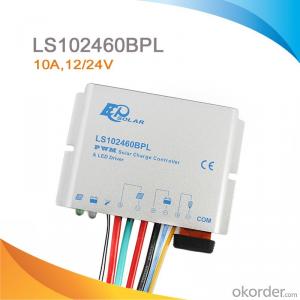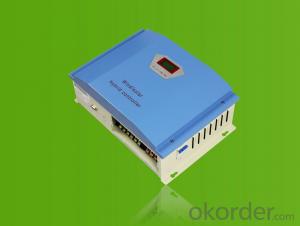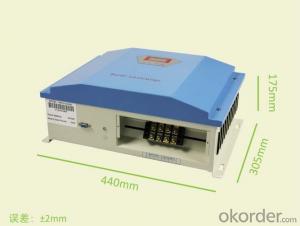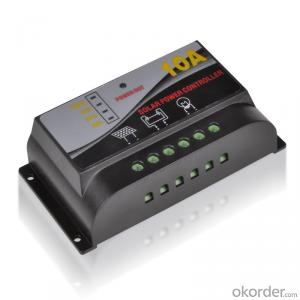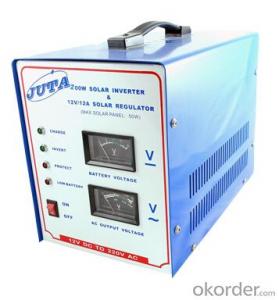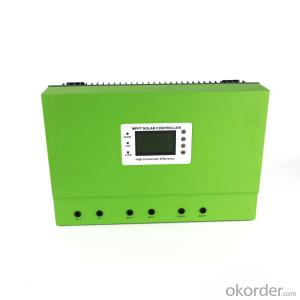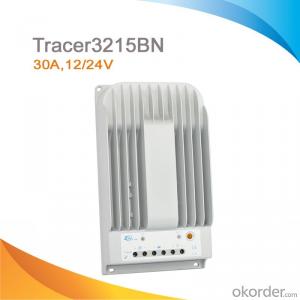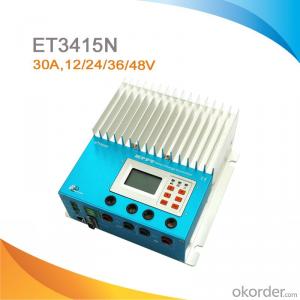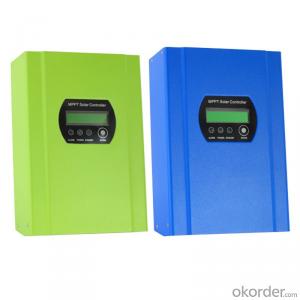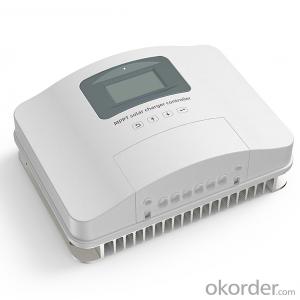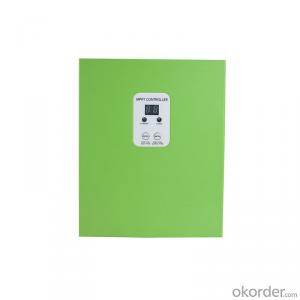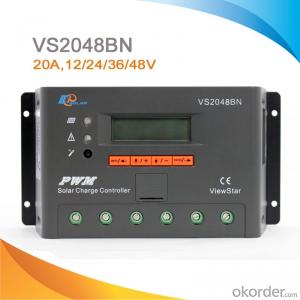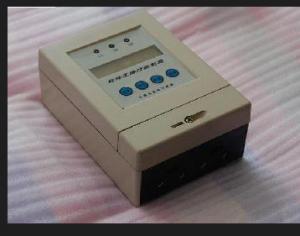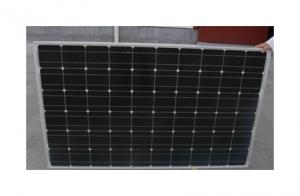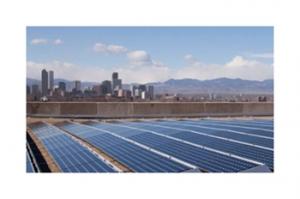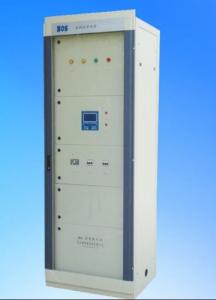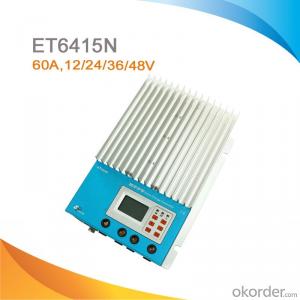SUN-MPPT-3015A Solar charge controller 30A
- Loading Port:
- Ningbo
- Payment Terms:
- TT OR LC
- Min Order Qty:
- -
- Supply Capability:
- 500 kg/month
OKorder Service Pledge
OKorder Financial Service
You Might Also Like
1.0 General Information
1.1 Overview
Thank you for selecting the MPPT solar charge controller.The MPPT is essentially a smart DC to DC converter which has been optimized to harvest maximum energy from the PV array in battery based solar electric systems by using a variety of maximum power point tracking (MPPT) strategies. The controller’s secondary objective is to ensure that the batteries receive a full charge without becoming overcharged. This is accomplished through a four stage charging process. Please take the time to read this operator’s manual and be familiar with the controller.This will help you make full use of the many advantages the MPPT can provide for your PV system.
1.2 Features
1 - Battery Status LED Indicator:An LED indicator that shows battery status or system errors.
2 - Charging Status LED Insdicator:An LED indicator that shows charging status and overvoltage of pv.
3 - Setting Button1:Set load work mode,battery type and max charge current.
4 - Setting Button2:Set load work mode,battery type and max charge current(in manual mode used for load ON/OFF).
5 - LCD Digital Display:Dispaly the system status
6 - Wiring Box Cover:Sheet metal wiring box cover protects power connections
7 - FAN:FAN to dissipate Internal circuit heat
8 - Heatsink:Aluminum heatsink to dissipate controller heat
9 - Mounting Hanger:Keyhole slot for mounting
10 - Solar Module Terminals:Connect solar modules
11 - Battery Terminals:Connect batteries
12 - Load Terminals:Connect loads
13 - RJ45 Communication Interface:Communicate with personal computer
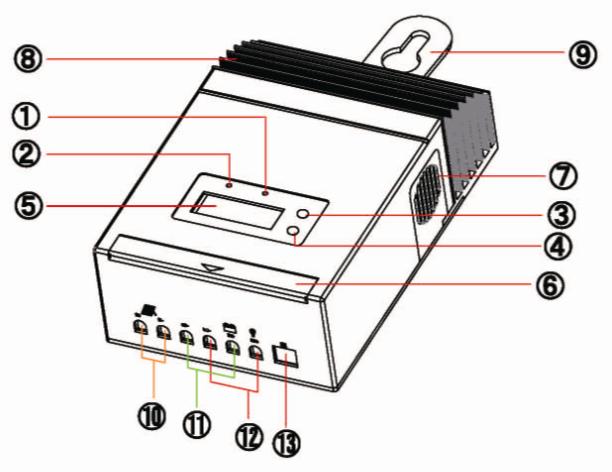
2.0 General Information
The mounting location is important to the performance and operating life of the controller. The environment must be dry and protected from water ingress. If required, the controller may be installed in a ventilated enclosure with sufficient air flow. Never install the MPPT unit in a sealed enclosure. The controller may be mounted in an enclosure with sealed batteries, but never with vented/ flooded batteries. Battery fumes from vented batteries will corrode and destroy the MPPT circuits. Multiple MPPT can be installed in parallel on the same battery bank to achieve higher charging current. Additional parallel controllers can also be added in the future. Each MPPT must have its own solar array.
CAUTION: Equipment Damage or Risk of Explosion
Never install the MPPT in an enclosure with vented/Flooded batteries. Battery fumes are fl ammable and will corrode and destroy the MPPT circuits.
CAUTION: Equipment Damage
When installing the MPPT in an enclosure, ensure suffi cient ventilation. Installation in a sealed enclosure will lead to over-heating and a decreased product lifetime.
NOTE : Mounting
When mounting the MPPT ,ensure free air through the controller heat sink fins. There should be at least 150mm of clearance above and below the controller to allow for cooling. If mounted in an enclosure, ventilation is highly recommended.
3.0 Specifications
Electrical
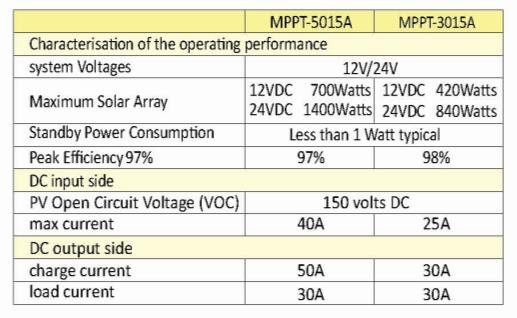
NOTE:
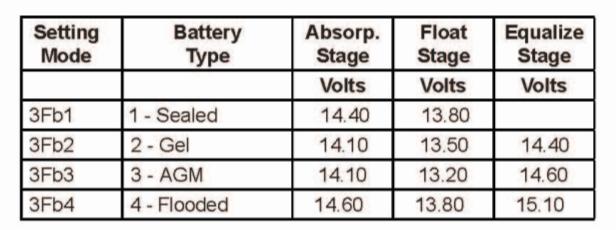
All charging voltage setpoints listed are for 12 Volt systems. Multiply 2X for 24 Volt systems.
Battery Charging Charging algorithm 4 - stage Charging stages Bulk, Absorption, Float, Equalize Temperature compensation coeffcient -5 mV / °C / cell (25 °C ref.) Temperature compensated setpoints Absorption, Float, Equalize, HVD Charging Setpoints:
- Q: Can a solar controller be used with solar-powered indoor security systems?
- Yes, a solar controller can be used with solar-powered indoor security systems. A solar controller is responsible for managing and regulating the power coming from the solar panels to the connected devices or batteries. In the case of solar-powered indoor security systems, a solar controller can be used to ensure that the solar panels generate enough power to keep the security system running efficiently. The solar controller will monitor the power output from the panels and adjust the voltage and current to match the requirements of the security system. This ensures that the system receives a steady and reliable power supply, even during periods of low sunlight or fluctuating weather conditions. So, by using a solar controller, solar-powered indoor security systems can operate effectively and provide continuous surveillance without the need for external power sources.
- Q: What is the maximum number of solar panels a solar controller can handle?
- The maximum number of solar panels a solar controller can handle depends on the specific model and its specifications. Different solar controllers have different capacity limits, which are typically measured in terms of the maximum input voltage and current they can handle. It is important to consult the manufacturer's specifications or user manual to determine the exact maximum number of solar panels that a specific solar controller can handle.
- Q: What are the advantages of using an MPPT solar controller?
- The advantages of using an MPPT (Maximum Power Point Tracking) solar controller include improved efficiency, increased energy production, and compatibility with various solar panel configurations. MPPT controllers can track and adjust the solar panel's voltage and current to operate at the maximum power point, ensuring optimal energy conversion and maximizing the amount of electricity generated from the solar panels. Additionally, MPPT controllers can work with different types and sizes of solar panels, allowing for greater flexibility in system design and installation.
- Q: How does a solar controller handle battery low voltage disconnect recovery?
- Battery low voltage disconnect recovery is managed by a solar controller through the monitoring of the battery's voltage in relation to the solar system. When the battery's voltage falls below a predetermined threshold, typically around 11.5 to 12 volts, the solar controller will separate the battery from the load in order to prevent further discharge. Once the battery is separated, the solar controller will continuously observe the battery's voltage, waiting for it to rise above a specific level referred to as the recovery voltage. Only then will the solar controller reconnect the battery to the load. Throughout the recovery phase, the solar controller will gradually increase the voltage supplied to the battery, ensuring a controlled and safe reconnection process that avoids sudden power surges. This careful approach prevents any potential harm to both the battery and the connected devices. The solar controller's capacity to handle battery low voltage disconnect recovery guarantees the protection of the battery against over-discharge, which can result in irreversible damage and reduced battery performance. By appropriately disconnecting and reconnecting the battery at suitable voltage levels, the solar controller actively contributes to extending the battery's lifespan and maximizing the efficiency of the entire solar system.
- Q: How does a solar controller regulate the charging process?
- A solar controller regulates the charging process by monitoring the voltage and current from the solar panels and adjusting the charge rate to prevent overcharging of the batteries. It ensures that the batteries receive the optimal charge while protecting them from damage due to overcharging or undercharging.
- Q: Can a solar controller be used with solar-powered medical equipment?
- Yes, a solar controller can be used with solar-powered medical equipment. A solar controller helps regulate the charging process of a solar panel, ensuring the proper voltage and current are supplied to the equipment's batteries. This helps protect the batteries from overcharging and damage, while maximizing the efficiency of the solar power system.
- Q: How does a solar controller prevent overcharging of batteries?
- A solar controller prevents overcharging of batteries by regulating the flow of electricity from the solar panels to the batteries. It continuously monitors the battery voltage and adjusts the charging current accordingly, ensuring that the batteries are charged at the optimal level and preventing any excess energy from damaging the batteries due to overcharging.
- Q: What is the role of a solar controller in maintaining battery health?
- The significance of a solar controller in preserving battery health cannot be overstated. It functions as both a regulator and guardian for the battery that is connected to a solar power system. Its primary responsibility is to ensure that the battery is charged and discharged correctly, thereby averting the detrimental effects of overcharging and deep discharging on the battery's longevity and overall well-being. One of the principal tasks of a solar controller is to oversee and manage the battery's charging process. It accomplishes this by controlling the flow of current from the solar panels to the battery, guaranteeing that the battery receives an appropriate charge that aligns with its capacity and state of charge. Through its regulation of the charging process, the solar controller effectively prevents overcharging, which can inflict harm upon the battery, such as diminished capacity or even irreversible failure. In addition, the solar controller performs an integral role in safeguarding the battery against deep discharging. Exceeding a certain level of discharge can result in irreparable damage and a reduced lifespan for the battery. By constantly monitoring the battery's voltage, the solar controller intervenes and disconnects the load from the battery once it reaches a predetermined low voltage threshold. This preventative measure effectively averts deep discharging and ensures that the battery remains within safe operational parameters. Moreover, a solar controller often incorporates various protective mechanisms to shield the battery from potential issues. These protective features can include safeguards such as short-circuit protection, reverse polarity protection, and temperature compensation. By implementing these protective measures, the solar controller prevents any inadvertent damage to the battery caused by external factors or improper installation. In conclusion, the primary role of a solar controller in maintaining battery health is to regulate and safeguard the battery throughout the charging and discharging process. Through the prevention of overcharging and deep discharging, as well as the inclusion of additional protective mechanisms, the solar controller contributes to the prolonged lifespan, optimized performance, and overall well-being of the battery within a solar power system.
- Q: How does a solar controller handle battery over-temperature protection?
- A solar controller handles battery over-temperature protection by monitoring the temperature of the battery and activating a protection mechanism when it exceeds a certain threshold. This mechanism typically involves reducing or cutting off the charging current to prevent further temperature rise and potential damage to the battery.
- Q: How does a solar controller prevent overcharging?
- A solar controller prevents overcharging by regulating the amount of electricity that is sent to the batteries. It monitors the battery voltage and adjusts the charging rate accordingly, ensuring that the batteries do not receive more charge than they can handle.
Send your message to us
SUN-MPPT-3015A Solar charge controller 30A
- Loading Port:
- Ningbo
- Payment Terms:
- TT OR LC
- Min Order Qty:
- -
- Supply Capability:
- 500 kg/month
OKorder Service Pledge
OKorder Financial Service
Similar products
Hot products
Hot Searches
Related keywords



